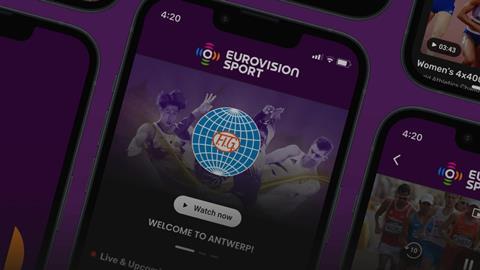Steve Norris, director of production & content at EMG/Gravity Media, on what he thinks broadcasters should prioritise to capture younger audiences

In recent years, traditional sports viewing habits have been disrupted by a range of rapidly emerging trends that have significantly broadened the ways people choose to consume content. With high-speed digital connectivity approaching ubiquitous levels of availability, there have never been more choices available as to the range of sports to watch, when to watch them, and on which type of device.
One of the biggest drivers of change is generational. In many cases, parents born in the 1970s and ’80s will have been brought up with totally different experiences of what sports broadcasting involves compared to their children. Even though many older people will have adapted to emerging consumption options, comparatively few will use them with the sophistication of today’s crop of teenagers and twenty-somethings.
For instance, one study revealed that social media ranks as the top way for 18-34-year-olds to engage with sports – double the rate of those 55 and older. Younger generations also show a definite preference for streamed video content online and sports podcasts over linear TV viewing. Indeed, for many Gen Z’s who have grown up with the on-demand model, following a linear TV schedule is an alien concept completely at odds with their requirements.
This behavioural shift extends beyond just content consumption. Research indicates that younger fans are also likely to multitask while watching sports, including participating in fantasy leagues, gaming experiences and other interactive options. This is primarily because they are more interested in immersive, integrated viewing experiences rather than just passive spectating.
As Gen Z redefines what it means to be an armchair sports fan, traditional tier-one sports are also now subject to competition for viewers from emerging alternatives, particularly esports. These are no longer niche events, with the 2023 Gamers8 esports festival, for instance, reaching over 1.3 billion total and 1 million peak viewers in an event where over 300 teams, 1,300 players and over 80 nationalities participated. Driven by these huge numbers, esports events are also driving innovation by showcasing technologies such as Augmented Reality (AR) graphics to deliver a cutting-edge viewing experience.
These converging viewing options highlight the need for the sports industry to dedicate equal effort to managing legacy and emerging events. In particular, nurturing grassroots competitions has long been an important strategy for those broadcasting ‘traditional’ sports. Applying the same principles to esports will also provide development opportunities while catering to Gen Z’s interest in the authenticity and accessibility of lower-tier events.
Adapt or die?
Gen Z’s preference for instant gratification is reshaping not just how they consume sports but how the industry must present content and structure work experiences going forward. Younger viewers have blurred the distinctions between social viewing and linear consumption so completely that, to them, it’s all just “content” – some of which is presented in a more appealing and relevant format than others.
To engage this key audience, sports broadcasters must prioritise dynamic, interactive viewing experiences accessible across devices. At the same time, the industry must also rethink how work is structured and rewarded to attract the next generation of behind-the-scenes talent whose fresh perspectives will drive continued innovation. Without it, there is always potential for skill shortages to get in the way of innovation.
Ultimately, as Gen Z rises to prominence as both sports viewers and professionals, the broadcast industry must continue to adapt its models to maintain relevance and growth. The shift towards digital engagement is only certain to increase in importance while emerging innovations such as AI, VR and AR – and maybe even the metaverse, who knows? – will ensure that rights holders, broadcasters and content creators will need to stay on their toes.

Steve Norris is director of production & content at EMG/Gravity Media





No comments yet